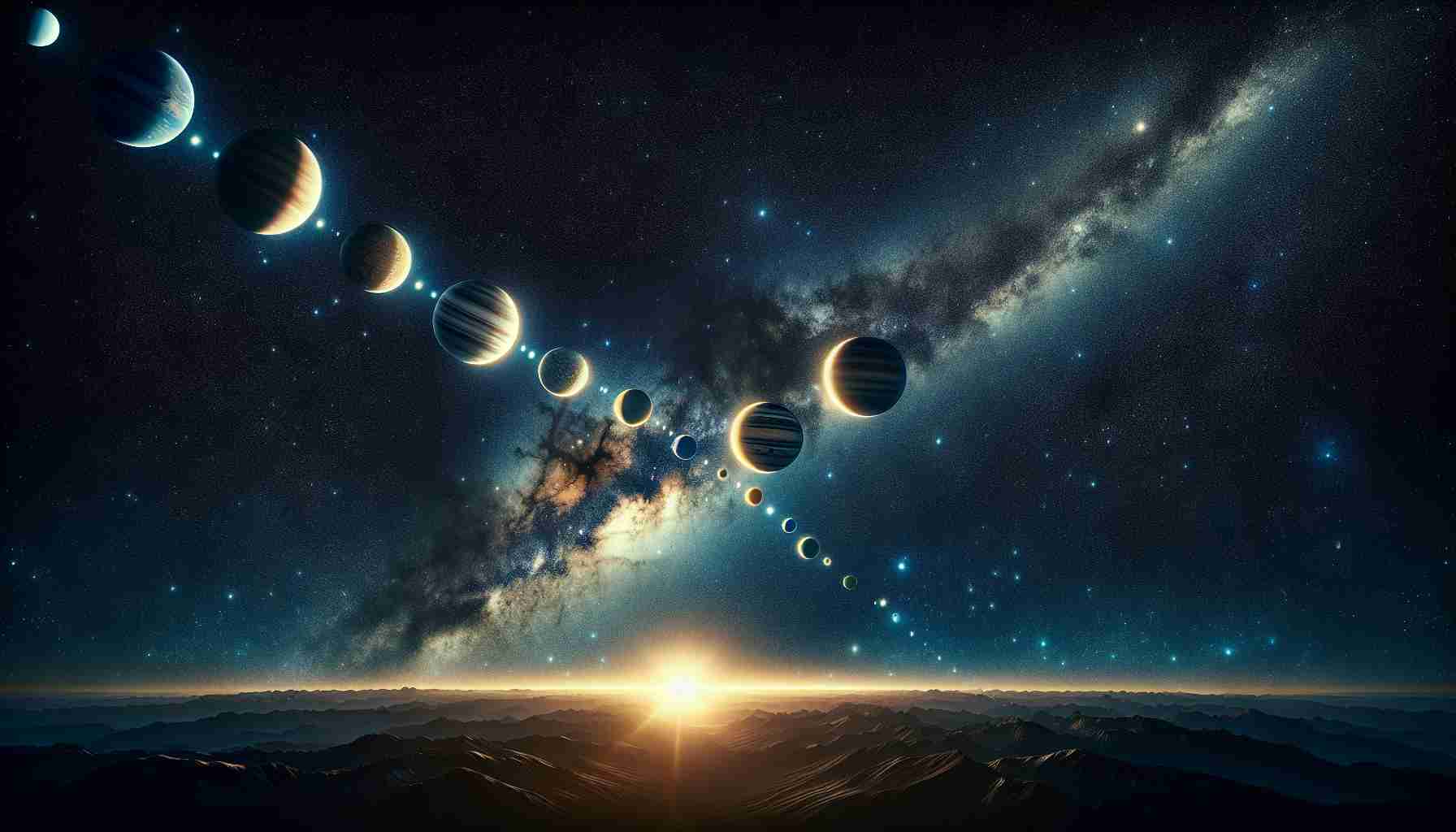An Unmissable Night Sky Event
Tonight, an extraordinary celestial show awaits as six planets come together in a breathtaking alignment visible from Earth. This event, called a “planetary parade,” features Mars, Jupiter, Uranus, Neptune, Saturn, and Venus all positioned on the same side of the sun, forming a captivating arc across the night sky.
Live Broadcast of the Cosmic Spectacle
Starting at 12:30 p.m. ET (1730 GMT) on January 25, astronomy enthusiasts can tune in to the Virtual Telescope Project in Italy for a live webcast. Renowned astrophysicist Gianluca Masi will guide viewers through real-time telescope observations of this rare gathering, accessible via their official website or YouTube channel.
Why This Parade is Special
While alignments like this are not uncommon, the visibility of such bright planets—Mars, Jupiter, Saturn, and Venus—makes this occasion particularly remarkable. The first two hours after sunset will reveal the show, with Venus and Saturn appearing close together in the southwest, Jupiter high in the sky, and Mars in the east. For those wanting a closer look at Uranus and Neptune, binoculars or a telescope will be necessary, as they are not visible to the naked eye.
Inspiration to Explore Further
This planetary gathering serves as an invitation for stargazers to reflect on the universe. Astronomers encourage everyone to take a moment and appreciate the beauty above, inspiring a deeper curiosity about the cosmos. Be sure to catch this awe-inspiring spectacle live!
Celestial Wonders: A Broader Perspective
The recent alignment of the six planets has the potential to create ripples beyond mere aesthetic appreciation. Astronomical events like these have profound implications for society and culture, rekindling humanity’s age-old fascination with the cosmos. The surge in interest in stargazing can bolster educational initiatives in STEM fields, encouraging young minds to explore careers in science and technology. As public enthusiasm grows, so does support for funding in scientific research, which can ultimately lead to innovations that enhance our global economy.
Moreover, this celestial showcase serves as a reminder of our fragile planet and its place in the universe. In an age marked by climate change and environmental degradation, such events prompt a collective reflection on our stewardship of Earth. They encourage a sense of global community as people unite under the same vast sky, transcending borders and cultural divides.
Looking to the future, this planetary parade may pave the way for enhanced astronomical tourism, wherein enthusiasts travel to optimal locations to experience such rare alignments. This can stimulate local economies while also raising awareness about conservation efforts in areas designated as dark sky reserves. As we gaze upwards in wonder, let us also consider our responsibility to protect the planet beneath our feet for generations to come.
Don’t Miss the Celestial Spectacle: A Remarkable Planetary Parade Tonight!
An Unmissable Night Sky Event
Tonight, stargazers have a thrilling opportunity to experience a rare planetary parade featuring six planets—Mars, Jupiter, Uranus, Neptune, Saturn, and Venus—perfectly aligned on the same side of the Sun. This exceptional alignment creates a stunning arc across the night sky, offering a unique viewing experience for astronomy enthusiasts and casual observers alike.
Live Broadcast of the Cosmic Spectacle
For those eager to witness this extraordinary event, the Virtual Telescope Project in Italy will host a live webcast beginning at 12:30 p.m. ET (1730 GMT) on January 25. Leading the live broadcast is esteemed astrophysicist Gianluca Masi, who will provide guided observations. Viewers can access the event on their official website or via their YouTube channel, making it accessible to a global audience.
Why This Parade is Special
Although planetary alignments are not rare occurrences, the prominence of the planets involved makes this event exceptional. The alignment will allow viewers to see Venus and Saturn closely positioned in the southwestern sky, Jupiter brilliantly lighting up the center, and Mars rising in the east during the two hours following sunset. To catch a glimpse of the more distant Uranus and Neptune, observers will need binoculars or a telescope, as these planets are not visible to the naked eye.
How to Prepare for Viewing
To enhance your experience during this celestial event, consider the following tips:
1. Choose the Right Location: Find a dark, open area away from city lights for the best views.
2. Use Binoculars or a Telescope: While bright planets are visible without assistance, binoculars or a telescope will allow you to see Uranus and Neptune.
3. Plan Ahead: Check local sunset times to optimize your viewing window shortly after sunset.
4. Dress Comfortably: Depending on the weather, dress appropriately and bring a blanket or chair for comfort.
5. Take Your Time: Spending a few moments observing can deepen your appreciation of the universe.
The Significance of Planetary Alignments
Planetary alignments offer a valuable opportunity for scientific education and public engagement with astronomy. Such events inspire curiosity and reflection on the cosmos, fostering a sense of wonder about our place in the universe. The alignment of bright planets serves as a reminder of the vastness of space and the beauty it holds.
Future Celestial Events to Watch For
Astronomy enthusiasts should keep an eye on upcoming celestial events, including:
– Lunar Eclipses: A rare opportunity to observe Earth’s shadow moving across the Moon.
– Meteor Showers: Events like the Perseids in August or the Geminids in December provide spectacular displays.
– Solar Eclipses: Total and partial solar eclipses are breathtaking experiences, notably the next total solar eclipse on April 8, 2024.
Conclusion
Don’t miss this stunning celestial parade of six planets tonight! Whether watching from home or joining a community viewing event, this is an excellent opportunity to connect with the wonders of the universe. For more astronomical insights and updates on future events, visit NASA or Sky & Telescope. Enjoy the show!
